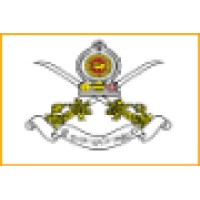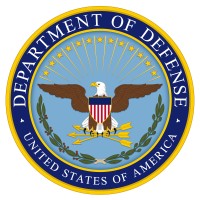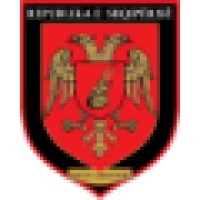
Sri Lanka Army Company Cyber Security Posture
army.lkThe Army Act was enacted in parliament on the 10th of October 1949 which is recognized as the day, the Ceylon Army was raised. The Army was to be comprised of a Regular and a Volunteer force. In May 1972, when Ceylon became the Republic of Sri Lanka, all Army units were renamed accordingly Regimental Centres # SLAC- Sri Lanka Armoured Corps # SLA - Sri Lanka Artillery # SLE - Sri Lanka Engineers # SLSC - Sri Lanka Signals Corps # SLLI - Sri Lanka Light Infantry # SLSR - Sri Lanka Sinha RegimentM # GW - Gamunu Watch # GR - Gajaba Regiment # VIR - Vijayabahu Infantry Regiment # MIR- Mechanized Infantry Regiment # CDO - Commando Regiment # SF - Special Forces Regiment # MIC - Military Intelligence Corps # CES - Corps of Engineer Services # SLASC - Sri Lanka Army Service Corps # SLAMC - Sri Lanka Army Medical Corps # SLAOC - Sri Lanka Army Ordnance Corps # SLEME - Sri Lanka Electrical and Mechanical Engineers # SLCMP - Sri Lanka Corps of Military Police # SLAGSC - Sri Lanka Army General Service Corps # SLAWC - Sri Lanka Army Women's Corps # SLRC - Sri Lanka Riffle Corps # SLPC - Sri Lanka Army Pioneer Corps # SLNG - Sri Lanka National Guard
SLA Company Details
sri-lanka-army
10,001+ employees
0
928
Armed Forces
army.lk
Scan still pending
SRI_6715515
In-progress
Between 800 and 900
This score is AI-generated and less favored by cyber insurers, who prefer the TPRM score.
 SLA Global Score
SLA Global Score.png)

Sri Lanka Army Company Scoring based on AI Models
| Model Name | Date | Description | Current Score Difference | Score |
|---|---|---|---|---|
| AVERAGE-Industry | 03-12-2025 | This score represents the average cybersecurity rating of companies already scanned within the same industry. It provides a benchmark to compare an individual company's security posture against its industry peers. | N/A | Between 800 and 900 |
Sri Lanka Army Company Cyber Security News & History
| Entity | Type | Severity | Impact | Seen | Url ID | Details | View |
|---|
Sri Lanka Army Company Subsidiaries

The Army Act was enacted in parliament on the 10th of October 1949 which is recognized as the day, the Ceylon Army was raised. The Army was to be comprised of a Regular and a Volunteer force. In May 1972, when Ceylon became the Republic of Sri Lanka, all Army units were renamed accordingly Regimental Centres # SLAC- Sri Lanka Armoured Corps # SLA - Sri Lanka Artillery # SLE - Sri Lanka Engineers # SLSC - Sri Lanka Signals Corps # SLLI - Sri Lanka Light Infantry # SLSR - Sri Lanka Sinha RegimentM # GW - Gamunu Watch # GR - Gajaba Regiment # VIR - Vijayabahu Infantry Regiment # MIR- Mechanized Infantry Regiment # CDO - Commando Regiment # SF - Special Forces Regiment # MIC - Military Intelligence Corps # CES - Corps of Engineer Services # SLASC - Sri Lanka Army Service Corps # SLAMC - Sri Lanka Army Medical Corps # SLAOC - Sri Lanka Army Ordnance Corps # SLEME - Sri Lanka Electrical and Mechanical Engineers # SLCMP - Sri Lanka Corps of Military Police # SLAGSC - Sri Lanka Army General Service Corps # SLAWC - Sri Lanka Army Women's Corps # SLRC - Sri Lanka Riffle Corps # SLPC - Sri Lanka Army Pioneer Corps # SLNG - Sri Lanka National Guard
Access Data Using Our API

Get company history
.png)
SLA Cyber Security News
New IDF Social Media Policy for Soldiers a ‘Lost Cause,’ Cybersecurity Expert Tells TML
“This is almost a lost cause,” Dr. Tal Pavel, a researcher on the connection between cybersecurity, international relations, and political ...
SideWinder APT Hackers Exploiting Old Office Flaws to Deliver Malware Bypassing Detections
Researchers found that the malware establishes persistence through an LNK file in the user's Startup folder and communicates with its command- ...
EC-Council and SLCERT Sign Landmark MOU to Elevate Sri Lanka's Cybersecurity Capabilities
By partnering with SLCERT, EC-Council aims to help foster a generation of cybersecurity professionals in Sri Lanka who are not only ready to ...
SideWinder APT Hackers Exploits Legacy Office Vulnerabilities to Deploy Malware Undetected
Exploiting unpatched legacy Microsoft Office vulnerabilities to deploy credential-stealing malware while evading contemporary detection mechanisms.
As the FBI takes down an army of ‘zombie computers’, what is a botnet?
The operation took down a botnet that had infected millions of computers with malware in nearly 200 countries.
Govt. rolls out ambitious move to de-politicise defence and security sectors
Govt. rolls out ambitious move to de-politicise defence and security sectors ... President Anura Kumara Dissanayake is making significant changes ...
Defence Secretary inaugurates ‘Aegis Lexicon 2024’ Defence Cyber Exposition
The Chief of National Intelligence (CNI) Major General Ruwan Kulatunga was also present at the event held in view of the completion of DCC's ...
Social media poses a real threat to military cybersecurity
Social media often tracks users' locations and profiles are frequently filled with material that could be used to indicate a user's position ...
Sri Lanka, Japan holds talks on strengthening defence ties
A number of areas that are mutually beneficial to Sri Lanka and Japan were discussed during a meeting between Deputy Minister of Defence Maj.

SLA Similar Companies

Belgian Defence
Defence currently has a thousand soldiers deployed around the world on average, generally in coordination with other international partners. After all, we not only carry out peace-making and keeping operations or humanitarian efforts. Our soldiers are professional bridge-builders who intervene in co

United States Department of Defense
The mission of the Department of Defense is to provide military forces necessary to protect the security of our country. The U.S. military defends the homeland, deters adversaries, and builds security around the world by projecting U.S. influence and working with allies and partners. In case deterre

U.S. Air Force Reserve
The Air Force Reserve is an integral component of our Nation's air defense and military support network. Reservists bring knowledge, skills and expertise from their civilian experiences to support critical missions and training around the globe, while working alongside their Active Duty Air Force me

Royal Air Force (RAF)
Today’s RAF is the UK’s aerial, peacekeeping and fighting force. It’s made up of full-time Regulars and spare-time Reserves who come from diverse backgrounds and work side-by-side to make a difference at home and abroad. When it comes to recruitment our focus is attracting the best personnel and ens

U.S. Coast Guard
The mission of the U.S. Coast Guard is to protect the public, the environment, and U.S. economic interests — in the nation's ports and waterways, along the coast, on international waters, or in any maritime region as required to support national security. As one of the five branches of the Armed

Albanian Armed Forces
The Albanian Armed Forces (AAF) (Albanian: Forcat e Armatosura të Republikës së Shqipërisë (FARSH)) were formed after the declaration of independence in 1912. Today it consists of: the General Staff, the Albanian Land Force, the Albanian Air Force and the Albanian Naval Force. According to the Al

Frequently Asked Questions
Explore insights on cybersecurity incidents, risk posture, and Rankiteo's assessments.
SLA CyberSecurity History Information
How many cyber incidents has SLA faced?
Total Incidents: According to Rankiteo, SLA has faced 0 incidents in the past.
What types of cybersecurity incidents have occurred at SLA?
Incident Types: The types of cybersecurity incidents that have occurred include .
Incident Details
What are the most common types of attacks the company has faced?
Additional Questions
What Do We Measure?
















Every week, Rankiteo analyzes billions of signals to give organizations a sharper, faster view of emerging risks. With deeper, more actionable intelligence at their fingertips, security teams can outpace threat actors, respond instantly to Zero-Day attacks, and dramatically shrink their risk exposure window.
These are some of the factors we use to calculate the overall score:
Identify exposed access points, detect misconfigured SSL certificates, and uncover vulnerabilities across the network infrastructure.
Gain visibility into the software components used within an organization to detect vulnerabilities, manage risk, and ensure supply chain security.
Monitor and manage all IT assets and their configurations to ensure accurate, real-time visibility across the company's technology environment.
Leverage real-time insights on active threats, malware campaigns, and emerging vulnerabilities to proactively defend against evolving cyberattacks.




